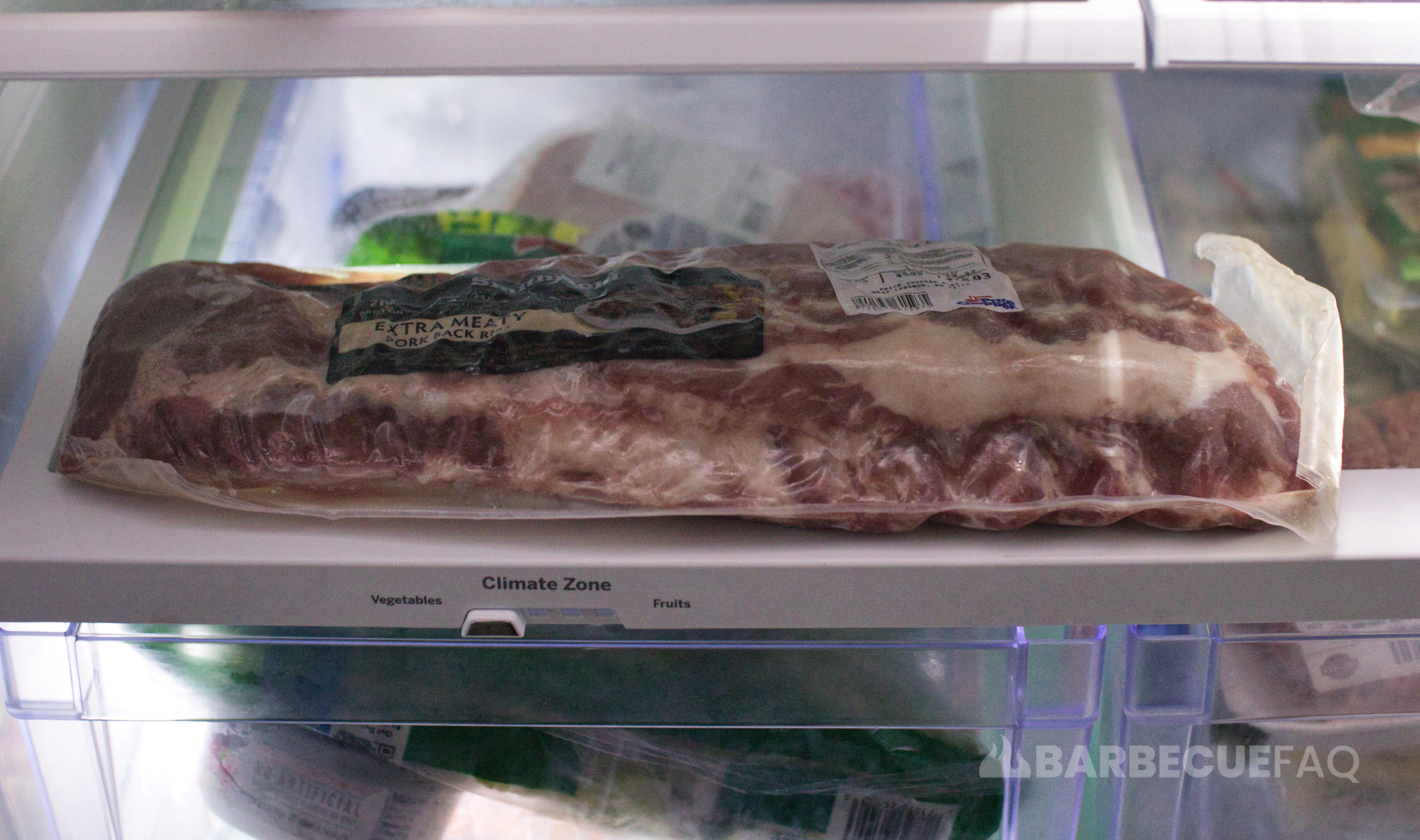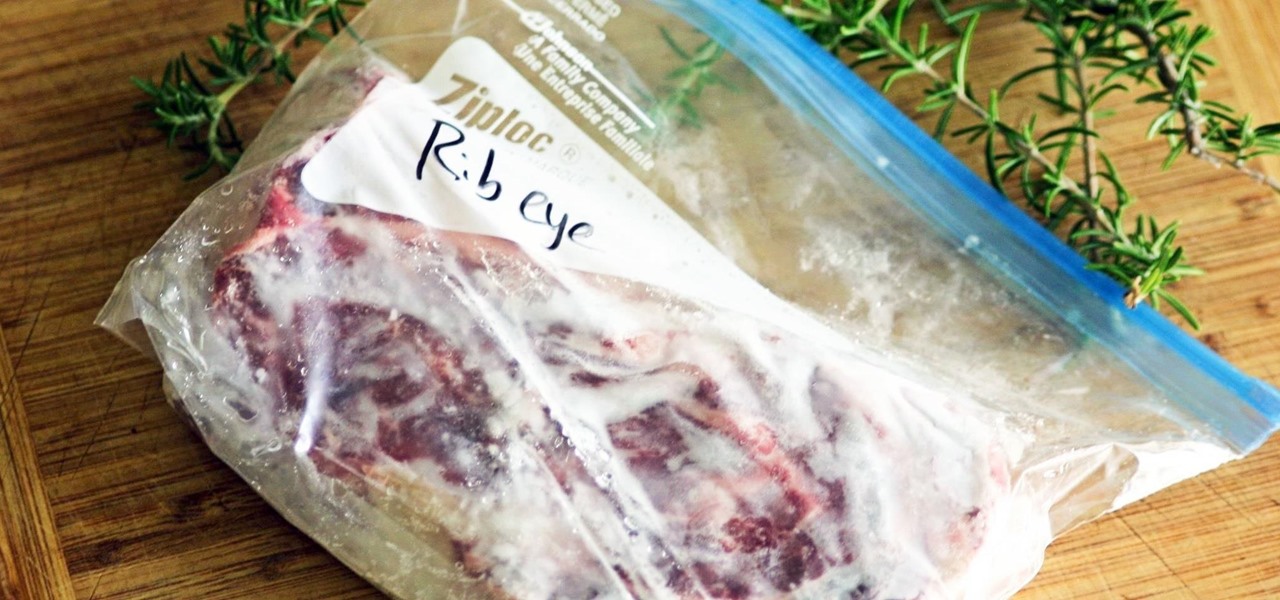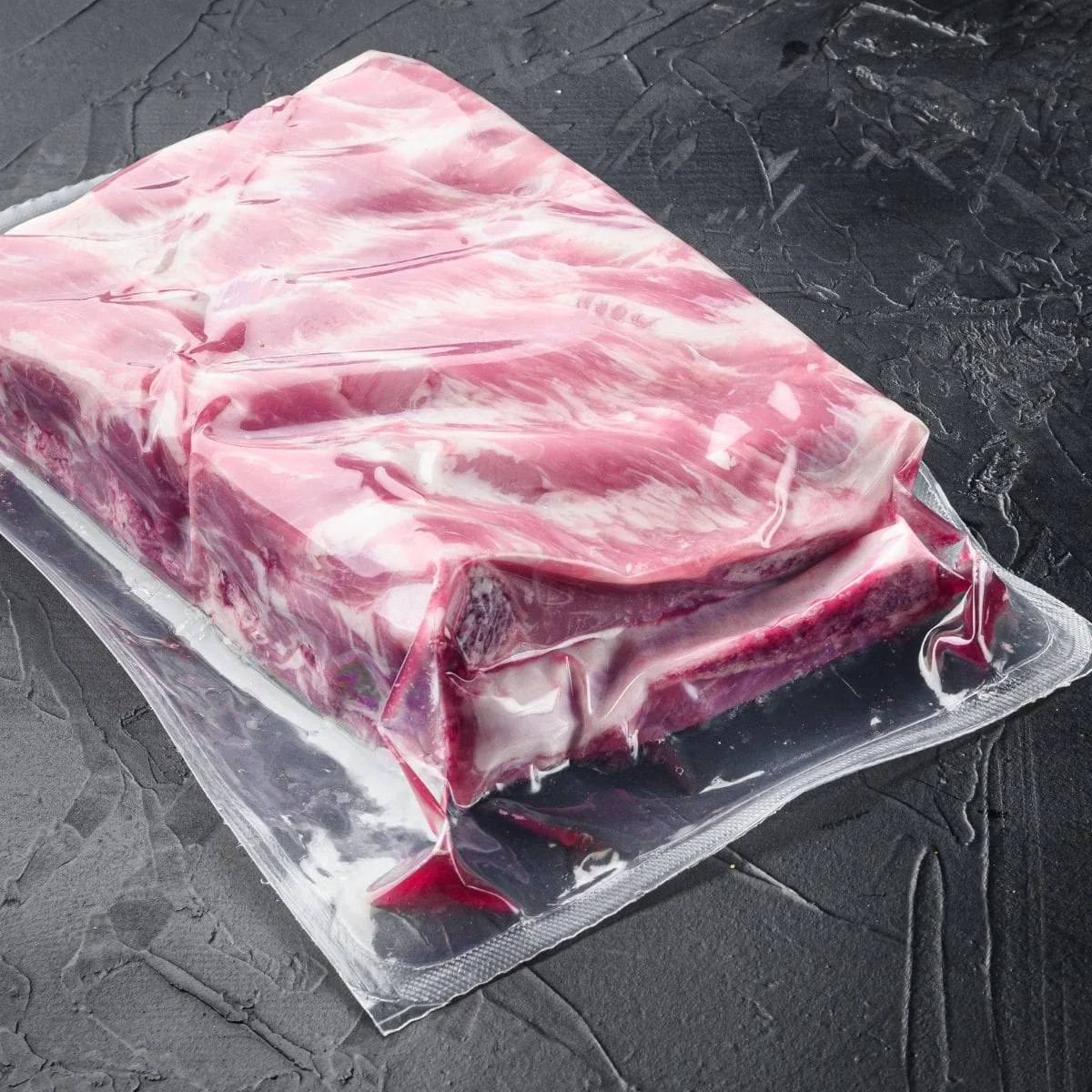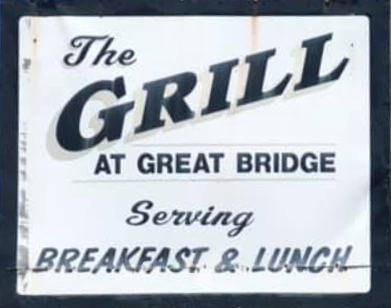
Introduction
Why It’s Important To Thaw Ribs Safely
Properly defrosting ribs is crucial for all BBQ enthusiasts to ensure a delicious and safe grilling experience. Thawing ribs safely is important because it helps prevent the growth of harmful bacteria that can cause foodborne illnesses. When ribs are thawed improperly, bacteria can multiply rapidly, increasing the risk of food poisoning. By following the correct thawing methods, you can maintain the quality and flavor of the ribs while ensuring they are safe to eat.
The Dangers Of Improper Thawing Methods
Improper thawing methods can lead to the growth of bacteria, which can pose serious health risks when consumed. Here are some dangers associated with improper thawing:
- Slow thawing at room temperature: Leaving ribs to thaw at room temperature can cause the outer layers to reach the temperature danger zone (40°F to 140°F) where bacteria can grow rapidly. This method significantly increases the risk of foodborne illnesses.
- Thawing in hot water: Thawing ribs in hot water can result in uneven defrosting and a loss of quality in the meat. Additionally, the warm temperature can encourage bacterial growth.
- Microwaving on high power: Microwaving ribs on high power can partially cook the meat, which can make it tough and dry. It may also result in uneven thawing, leaving some parts still frozen while others are overcooked.
- Thawing on the counter overnight: Leaving ribs on the counter overnight may seem convenient, but it is not a safe method. The temperature in your kitchen can fluctuate, allowing bacteria to thrive.
To ensure the safety and taste of your BBQ, it is essential to thaw ribs using proper methods. The safest options include thawing in the refrigerator, using cold water, or the defrost function on the microwave. These methods allow for a gradual thawing process that minimizes the risk of bacterial growth while preserving the quality of the meat.
In conclusion, knowing how to defrost ribs properly is crucial for a flavorful BBQ experience. Prioritizing food safety by thawing ribs safely will ensure that you and your guests can enjoy a delicious and safe meal. By following the correct thawing methods, you can avoid the dangers and risks associated with improper thawing and create mouthwatering BBQ ribs that everyone will love.
Thawing Ribs In The Refrigerator
Benefits Of Thawing In The Refrigerator
Thawing ribs in the refrigerator is a safe and effective method that slowly thaws the meat while keeping it at a safe temperature. This method offers several benefits:
- Gradual thawing: Thawing ribs in the refrigerator overnight allows for a gradual thawing process, which helps preserve the texture and taste of the meat. The slow thawing prevents the outer layers from reaching the temperature danger zone where bacteria can multiply rapidly.
- Retains moisture: Thawing in the refrigerator helps retain the moisture content of the ribs, ensuring they remain juicy and tender when cooked. This method avoids any potential loss of quality that can occur with faster thawing methods.
- Convenience: While it requires some planning ahead, thawing ribs in the refrigerator is a convenient method. You can simply place the frozen ribs in the fridge in advance and allow them to thaw slowly without any additional effort required.
Safe Temperature Maintenance During The Thawing Process
Maintaining a safe temperature during the thawing process is crucial to ensure the ribs remain safe to eat. Thawing in the refrigerator offers temperature control, reducing the risk of bacterial growth. Here are some tips for maintaining a safe temperature:
- Keep ribs in a leak-proof bag: Place the frozen ribs in a leak-proof bag or container to prevent any potential cross-contamination with other foods in the refrigerator.
- Use the lowest shelf position: Store the ribs on the lowest shelf to prevent any juices from dripping onto other foods, further reducing the risk of cross-contamination.
- Regularly check refrigerator temperature: Ensure your refrigerator is set to or below 40°F (4°C) to maintain a safe temperature for thawing. Regularly check the temperature to confirm it remains within the safe range.
- Avoid refreezing thawed ribs: Once the ribs are fully thawed, it is important not to refreeze them. Refreezing can affect the quality and safety of the meat.
By following safe thawing methods, such as thawing in the refrigerator, you can ensure that your ribs are deliciously tender and safe to eat. Planning ahead and maintaining a safe temperature during the process will help you achieve mouthwatering BBQ ribs that everyone will enjoy.
Planning Ahead For Thawing Ribs
Factors To Consider For Defrosting Time
Size And Thickness Of The Meat
It is important to consider the size and thickness of the ribs when planning the defrosting time. Larger and thicker cuts will take longer to thaw compared to smaller ones. It is recommended to check the packaging for any specific instructions regarding defrosting time.
Number Of Ribs
If you are defrosting multiple racks of ribs, it may take longer than defrosting a single rack. Each rack will need enough space in the refrigerator to thaw properly, so be mindful of the quantity you are thawing.
Tips For Proper Planning And Preparation
Label Your Ribs
If you have various types of ribs in your freezer, consider labeling them to avoid confusion when defrosting. This will help you ensure that you are defrosting the specific type of ribs you intend to cook.
Think Ahead For Meal Preparation
Consider planning your meals in advance and thawing the appropriate amount of ribs accordingly. This will not only help with defrosting time but also with meal planning and reducing food waste.
Keep The Refrigerator Organized
Ensure that you have enough space in the refrigerator to accommodate the ribs. Clear out any unnecessary items and arrange the racks properly to allow for efficient thawing.
By taking these factors into account and following proper planning and preparation techniques, you can ensure a smooth thawing process for your ribs. This will help you achieve deliciously tender and safe-to-eat ribs for your next BBQ or meal.

Avoiding Room Temperature Thawing
Risks Of Thawing Ribs At Room Temperature
Leaving ribs out at room temperature can cause uneven cooking and potentially unsafe meat. The outer surface of the meat may thaw and warm up faster than the inner parts, leading to an uneven cooking process.
Bacterial Growth And Food Safety Concerns
Leaving frozen meat at room temperature for an extended period can encourage bacterial growth, posing a food safety risk. It is crucial to handle and thaw ribs properly to minimize the risk of bacterial contamination.
Planning Ahead For Thawing Ribs
Factors To Consider For Defrosting Time
- Size and thickness of the meat: Larger and thicker cuts of ribs will take longer to thaw compared to smaller ones. Check the packaging for specific instructions regarding defrosting time.- Number of ribs: Defrosting multiple racks of ribs may take longer than defrosting a single rack. Ensure there is enough space in the refrigerator for each rack to thaw adequately.
Tips For Proper Planning And Preparation
- Label your ribs: If you have different types of ribs in your freezer, label them to avoid confusion during defrosting.- Think ahead for meal preparation: Plan your meals in advance and thaw the appropriate amount of ribs accordingly. This helps with defrosting time and reduces food waste.- Keep the refrigerator organized: Make sure there is enough space in the refrigerator to accommodate the ribs. Clear out any unnecessary items and arrange the racks properly for efficient thawing.
By considering these factors and following proper planning and preparation techniques, you can ensure a smooth thawing process for your ribs. This will result in deliciously tender and safe-to-eat ribs for your next BBQ or meal.
Tips For Safe Thawing
Proper Packaging And Storage Techniques
- When storing ribs in the freezer, ensure they are properly packaged to prevent freezer burn and maintain quality. Use airtight containers or freezer bags to minimize moisture loss and protect against off-flavors.- Consider portioning the ribs before freezing to make thawing individual servings easier.- If using freezer bags, remove as much air as possible before sealing to prevent freezer burn and maintain freshness.
Avoiding Cross-contamination During The Thawing Process
- To avoid cross-contamination, place the ribs on a tray or in a shallow dish to catch any liquid that may leak during thawing.- Keep the ribs separate from other raw meat or food items in the refrigerator to prevent any potential contamination.- After thawing, discard any liquid that has accumulated to reduce the risk of bacterial growth.
By following proper packaging, storage, and thawing techniques, you can safely and confidently defrost your ribs for cooking. Remember to always prioritize food safety and handle raw meat with care. Enjoy your deliciously tender and flavorful ribs when they are thoroughly thawed and ready to be cooked.
Maintaining Ribs’ Texture And Flavor
The Gradual Thawing Process For Better Texture
- To ensure the best texture in your thawed ribs, it’s important to thaw them gradually.
- Avoid using quick thawing methods like microwaving or running hot water over the ribs, as these can result in uneven thawing and may negatively impact the texture of the meat.
- The ideal method is to transfer the ribs from the freezer to the refrigerator. This slow thawing process allows for a more even distribution of moisture, helping to preserve the tenderness and juiciness of the meat.
- Depending on the thickness of the ribs, it may take anywhere from 24 to 48 hours for them to thaw completely in the refrigerator.
- Patience is key during this process, as rushing the thawing can lead to a less desirable texture in the final cooked ribs.
Preserving The Taste And Juiciness Of The Meat
- When thawing your ribs, it’s important to minimize moisture loss and protect the natural flavors.
- Proper packaging is crucial in maintaining the taste and juiciness of the meat. Airtight containers or freezer bags should be used to prevent freezer burn and off-flavors.
- Consider portioning your ribs before freezing to make thawing individual servings easier. This way, you can defrost only what you need and minimize any unnecessary exposure to air.
- It’s recommended to remove as much air as possible from freezer bags before sealing to prevent freezer burn and maintain freshness.
- During the thawing process, it’s essential to avoid cross-contamination. Place the ribs on a tray or in a shallow dish to catch any liquid that may leak during thawing.
- Additionally, be mindful of keeping the ribs separate from other raw meats or food items in the refrigerator to prevent any potential contamination.
- After thawing, discard any accumulated liquid to reduce the risk of bacterial growth.
By following these tips, you can ensure that your thawing process for ribs is safe, maintaining their texture and flavor. Remember to prioritize food safety and handle raw meats with care. Once the ribs are thoroughly thawed, they will be ready to be cooked and enjoyed as deliciously tender and flavorful meals.
Alternative Thawing Methods
Using Cold Water Bath For Faster Thawing
If you’re pressed for time and need to thaw your ribs more quickly than the refrigerator method allows, you can opt for the cold water bath method. This method involves submerging the ribs in cold water, which helps to speed up the thawing process. Here’s how to do it:
- Ensure that the ribs are in a leak-proof package or plastic bag to prevent any water contamination.
- Fill a clean sink or large basin with enough cold water to completely cover the ribs.
- Place the ribs in the water, making sure they are fully submerged.
- Change the water every 30 minutes to maintain a consistently cold temperature.
- Plan on roughly 30 minutes per pound of ribs for thawing using this method.
- Once the ribs are completely thawed, proceed with cooking them immediately to maintain food safety.
It’s important to note that while this method is faster than refrigerator thawing, it requires more attention to ensure food safety. Make sure the water stays consistently cold and replace it as needed to prevent any temperature fluctuations that could lead to bacterial growth.
Thawing Ribs In The Microwave, If Necessary
In situations where you need to thaw your ribs quickly and don’t have time for other methods, you can use the microwave as a last resort. However, keep in mind that this method may negatively impact the texture of the meat if not executed properly. Here’s how to thaw ribs in the microwave:
- Remove the ribs from their original packaging and place them in a microwave-safe container.
- Set the microwave to the defrost setting or use a low power level.
- Press the defrost button and follow the microwave’s instructions for weight and time.
- Periodically flip the ribs during the defrosting process to ensure even thawing.
- Once the ribs are partially thawed, it’s crucial to cook them immediately to minimize any safety risks.
It’s essential to remember that microwaving should only be used as a last resort, as it can result in uneven thawing and affect the texture of the meat. Always follow the manufacturer’s instructions for your specific microwave model to ensure the safe thawing of your ribs.
By following these alternative thawing methods, you can thaw your ribs efficiently while taking appropriate precautions to maintain their texture and flavor. Whether you choose the cold water bath or microwave method, be sure to proceed immediately to the cooking stage to ensure food safety.

Ensuring Even Cooking
The Importance Of Evenly Thawed Ribs
Properly thawing ribs is crucial to ensure they cook evenly. When ribs are frozen, the interior may remain partially frozen while the exterior cooks, resulting in uneven cooking and potentially undercooked or overcooked sections. This can affect the texture and flavor of the ribs, and also pose a food safety risk.
Avoiding Undercooked Or Overcooked Sections
To avoid undercooked or overcooked sections in your ribs, it is important to defrost them thoroughly before cooking. Ensuring that the ribs are evenly thawed allows for a more consistent cooking time and temperature throughout the meat. This helps to achieve a tender and succulent texture without any raw or overcooked areas.
Using proper thawing techniques, such as the refrigerator method or cold water bath, allows the ribs to thaw gradually and evenly. These methods ensure that the ribs reach a safe internal temperature before cooking, reducing the risk of foodborne illnesses.
Microwaving, though it can be used as a last resort, may result in uneven thawing and affect the texture of the meat. It is important to follow the manufacturer’s instructions for your specific microwave model and cook the partially thawed ribs immediately to minimize any safety risks.
By taking the time to defrost your ribs properly, you can enjoy a perfectly cooked meal with minimal effort. Whether you choose the refrigerator, cold water bath, or microwave method, ensuring even thawing is essential for achieving delicious and safe ribs.
Conclusion
Benefits Of Following Safe Thawing Methods
Following safe thawing methods for ribs offers several benefits, including:
- Ensuring even cooking: Properly thawing ribs allows for even cooking throughout the meat. This eliminates the risk of undercooked or overcooked sections, resulting in a more consistent texture and flavor.
- Food safety: Thawing ribs using the refrigerator method or cold water bath ensures that the meat reaches a safe internal temperature before cooking. This reduces the risk of foodborne illnesses associated with partially thawed or improperly thawed meat.
- Maintaining texture: Thawing ribs gradually and evenly through proper methods helps to preserve the texture of the meat. Microwaving, on the other hand, may result in uneven thawing and affect the texture of the ribs.
Enjoying Delicious And Safe-to-eat Ribs
By taking the time to defrost ribs properly, you can enjoy a delicious and safe BBQ experience. Whether you choose the refrigerator method, cold water bath, or microwave method, ensuring even thawing is essential for achieving flavorful and perfectly cooked ribs.
Remember to prioritize food safety by following the recommended thawing methods and guidelines. This will not only result in a delicious BBQ but also provide peace of mind knowing that your ribs are safe to consume.
In conclusion, when it comes to thawing ribs, taking the necessary precautions and using proper thawing techniques is crucial. Whether you plan ahead and defrost in the refrigerator, use a cold water bath, or need to resort to the microwave as a last resort, prioritize food safety to ensure an enjoyable and safe BBQ experience.
Frequently Asked Questions (FAQ) about How to Defrost Ribs: Safely Thawing Your Meat
Q: How long does it take to defrost ribs?
A: The time it takes to defrost ribs can vary depending on the method used. In the refrigerator, it typically takes about 24 to 48 hours. Using the cold water method can take around 2 to 3 hours, while using the microwave can take around 5 to 10 minutes per pound.
Q: Is it safe to defrost ribs at room temperature?
A: No, it is not recommended to defrost ribs at room temperature. Leaving meat at room temperature allows bacteria to multiply quickly, increasing the risk of foodborne illnesses. It is best to use safe thawing methods such as the refrigerator, cold water, or the microwave.
Q: Can I cook ribs directly from frozen?
A: While it is possible to cook ribs directly from frozen, it is not recommended. Cooking frozen ribs may result in uneven cooking, where the outer layers may become overcooked while the inside remains frozen. It is best to thaw the ribs before cooking for even and consistent results.
Q: What is the safest method to defrost ribs?
A: The safest method to defrost ribs is in the refrigerator. This method provides a controlled environment with a consistent temperature, allowing the ribs to thaw slowly and evenly. It is recommended to place the ribs in a leak-proof bag or container to prevent any drips or cross-contamination.
Q: Can I defrost ribs in the microwave?
A: Yes, you can defrost ribs in the microwave, but it is important to use the defrost setting at a low temperature and follow the microwave’s instructions for defrosting meat. Keep in mind that the edges of the ribs may begin to warm or cook slightly during the defrosting process, so it is essential to proceed with caution.
Q: How do I defrost ribs using the cold water method?
A: To defrost ribs using the cold water method, place them in a leak-proof plastic bag and submerge them in cold water. Change the water every 30 minutes to prevent it from warming up. It is essential to ensure that the ribs are tightly sealed in the bag to prevent water from entering and diluting the flavor.
Q: Can I refreeze defrosted ribs?
A: It is generally safe to refreeze defrosted ribs if they remain at a safe temperature (below 40°F or 4°C) and have not been kept outside for an extended period. However, it is recommended to cook the ribs after defrosting rather than refreezing them to maintain optimal taste and quality.
Q: How can I safely thaw ribs quickly if I’m short on time?
A: If you need to thaw ribs quickly, you can use the microwave’s defrost setting. Alternatively, you can use the cold water method by placing the ribs in a sealed bag and submerging them in cold water. Remember to change the water every 30 minutes to maintain its cold temperature.
Q: Can I marinate ribs while they are still frozen?
A: It is generally best to thaw the ribs before marinating to ensure the flavors penetrate the meat evenly. Marinating frozen ribs may result in uneven absorption of the marinade and affect the overall taste. Thaw the ribs through one of the safe methods before marinating for the best results.
Q: Can I thaw ribs on the countertop if I monitor the temperature?
A: It is not recommended to thaw ribs on the countertop, even if the temperature is monitored. Leaving meat at room temperature creates a favorable environment for bacteria growth, which can lead to foodborne illnesses. It is safest to use proper thawing methods such as the refrigerator, cold water, or the microwave.
Remember, following safe thawing procedures is essential to ensure the ribs remain safe to eat and to maintain their quality. Always prioritize food safety to enjoy delicious and succulent ribs.

Keep up with weekly specials through Facebook under “The Grill at Great Bridge.”